 W
WMississippi was the second southern state to declare its secession from the United States, doing so on January 9, 1861. It joined with six other southern slave-holding states to form the Confederacy on February 4, 1861. Mississippi's location along the lengthy Mississippi River made it strategically important to both the Union and the Confederacy; dozens of battles were fought in the state as armies repeatedly clashed near key towns and transportation nodes.
 W
WThe Army of the Tennessee was a Union army in the Western Theater of the American Civil War, named for the Tennessee River.
 W
WBig Black River Battlefield is the site of the Battle of Big Black River Bridge, fought May 17, 1863, as part of the Vicksburg campaign in the American Civil War. It was listed on the National Register of Historic Places in 1971.
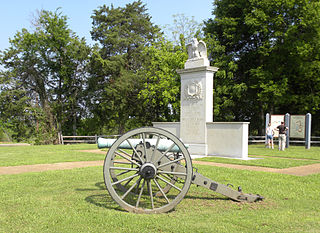 W
WBrices Cross Roads National Battlefield Site commemorates the Battle of Brices Crossroads, in which the Confederate army, under Major-General Nathan Bedford Forrest, defeated a much larger Union force on June 10, 1864, to ultimately secure supply lines between Nashville and Chattanooga, Tennessee.
 W
WBruinsburg is a ghost town in Claiborne County, Mississippi, United States.
 W
WUSS Cairo was one of the first American ironclad warships built at the beginning of the U.S. Civil War.
 W
WThe Pook Turtles, or City-class gunboats to use their semi-official name, were war vessels intended for service on the Mississippi River during the American Civil War. They were also sometimes referred to as "Eads gunboats." The labels are applied to seven vessels of uniform design built from the keel up in Carondelet, Missouri shipyards owned by James Buchanan Eads. Eads was a wealthy St. Louis industrialist who risked his fortune in support of the Union.
 W
WThe Colonel Robert A. Smith Monument, located in Hart County, Kentucky, is a monument related to the American Civil War, listed on the National Register of Historic Places. It was built in the memory of Colonel Robert A. Smith and the members of the 10th Mississippi Infantry Regiment who died in the service of the Confederate States of America on September 14, 1862, at the Battle of Munfordville.
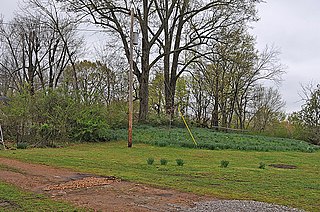 W
WThe Davis' Mills Battle Site is the historic site of an American Civil War conflict that took place on December 21, 1862. It was added to the National Register of Historic Places on October 2, 1973. It is located off Mississippi Hwy 7 in what is now Michigan City, Mississippi in Benton County, Mississippi.
 W
WGrand Gulf is a ghost town in Claiborne County, Mississippi, United States.
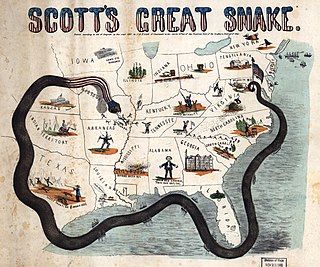 W
WThe Lower Seaboard Theater of the American Civil War encompassed major military and naval operations that occurred near the coastal areas of the Southeastern United States: in Alabama, Florida, Louisiana, Mississippi, South Carolina, and Texas) as well as southern part of the Mississippi River.
 W
WThe Mississippi Marine Brigade was a Union Army amphibious unit which included the United States Ram Fleet and operated from November 1862 to August 1864 during the American Civil War. The brigade was established to act swiftly against Confederate forces operating near the Mississippi River and its tributaries. The brigade was commanded by Brigadier General Alfred W. Ellet and operated in coordination with the Mississippi River Squadron during the Union brown-water navy battle against the Confederate River Defense Fleet and land based forces. The brigade was independent of the Union Army and Navy and reported directly to the Secretary of War, Edwin M. Stanton. Despite the name, it was never part of the United States Marine Corps.
 W
WThe Mississippi River Squadron was the Union brown-water naval squadron that operated on the western rivers during the American Civil War. It was initially created as a part of the Union Army, although it was commanded by naval officers, and was then known as the Western Gunboat Flotilla and sometimes as the Mississippi Flotilla. It received its final designation when it was transferred to the Union Navy at the beginning of October 1862.
 W
WOakland College was a Presbyterian-affiliated four-year college reserved for whites; it operated from 1830 to 1861 near Lorman, Mississippi. After years of closure during the American Civil War of 1861–1865 and a failure to reorganize following the war, it was closed down.
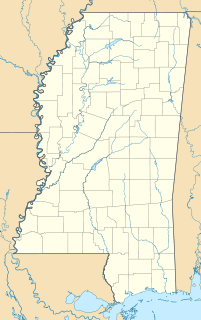 W
WThe Port Gibson Battlefield is the site near Port Gibson, Mississippi where the 1863 Battle of Port Gibson was fought during the American Civil War. The battlefield covers about 3,400 acres (1,400 ha) of land west of the city, astride Rodney Road, where Union Army forces were establishing a beachhead after crossing the Mississippi River in a bid to take the Confederate fortress of Vicksburg. The Union victory secured that beachhead and paved the way for the eventual fall of Vicksburg. A 2,080-acre (840 ha) area surrounding part of the site was listed on the National Register of Historic Places in 1972, and a larger area was designated a National Historic Landmark in 2005. In 2009, the battlefield was designated by the Civil War Preservation Trust as one of its Top 10 most endangered Civil War battlefields. In 2011, the Civil War Preservation Trust was renamed the Civil War Trust, which in 2018 became a division of the American Battlefield Trust. The Trust and its partners have acquired and preserved 644 acres (2.61 km2) of the Port Gibson battlefield.
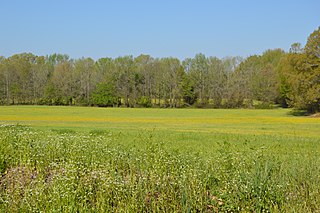 W
WThe Siege and Battle of Corinth Sites are a National Historic Landmark District encompassing surviving elements of three significant American Civil War engagements in and near Corinth, Mississippi. Included are landscape and battlefield features of the Siege of Corinth, the Second Battle of Corinth, and the lesser Battle of Hatchie's Bridge on October 5, 1862. The district includes features located in both Alcorn County, Mississippi and Hardeman County, Tennessee, with some of the former preserved as part of Shiloh National Military Park. It was designated a landmark in 1991.
 W
WTishomingo Hotel in Corinth, Mississippi was a hotel built in 1859, used as a military hospital during the American Civil War. It was burned down by Confederate forces in 1865.
 W
WThe United States Ram Fleet was a Union Army unit of steam powered ram ships during the American Civil War. The unit was independent of the Union Army and Navy and reported directly to the Secretary of War, Edwin M. Stanton. The ram fleet operated in coordination with the Mississippi River Squadron during the Union brown-water navy battle against the Confederate River Defense Fleet for control of the Mississippi River and its tributaries.
 W
WVicksburg National Military Park preserves the site of the American Civil War Battle of Vicksburg, waged from March 29 to July 4, 1863. The park, located in Vicksburg, Mississippi, also commemorates the greater Vicksburg Campaign which led up to the battle. Reconstructed forts and trenches evoke memories of the 47-day siege that ended in the surrender of the city. Victory here and at Port Hudson, farther south in Louisiana, gave the Union control of the Mississippi River.
 W
WThe Western Theater of the American Civil War encompassed major military operations in the states of Alabama, Georgia, Florida, Mississippi, North Carolina, Kentucky, South Carolina and Tennessee, as well as Louisiana east of the Mississippi River. Operations on the coasts of these states, except for Mobile Bay, are considered part of the Lower Seaboard Theater. Most other operations east of the Appalachian Mountains are part of the Eastern Theater. Operations west of the Mississippi River took place in the Trans-Mississippi Theater.